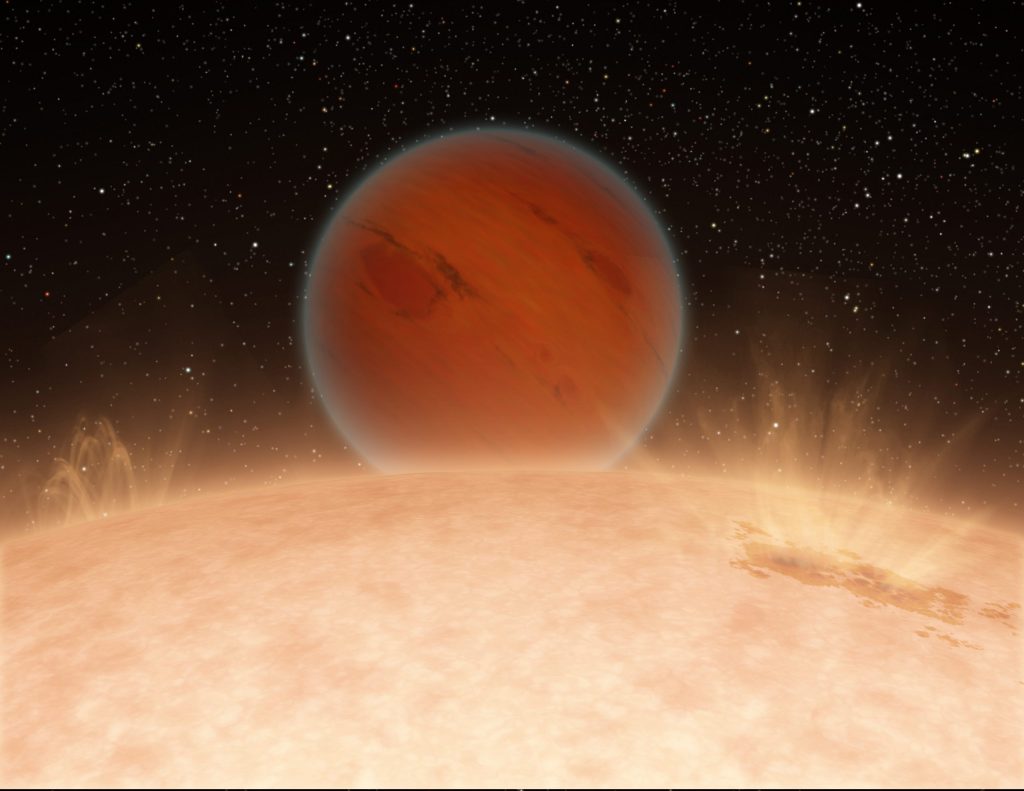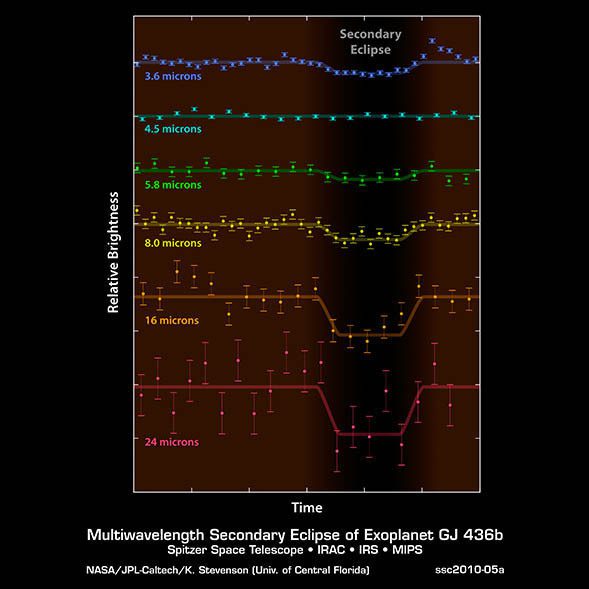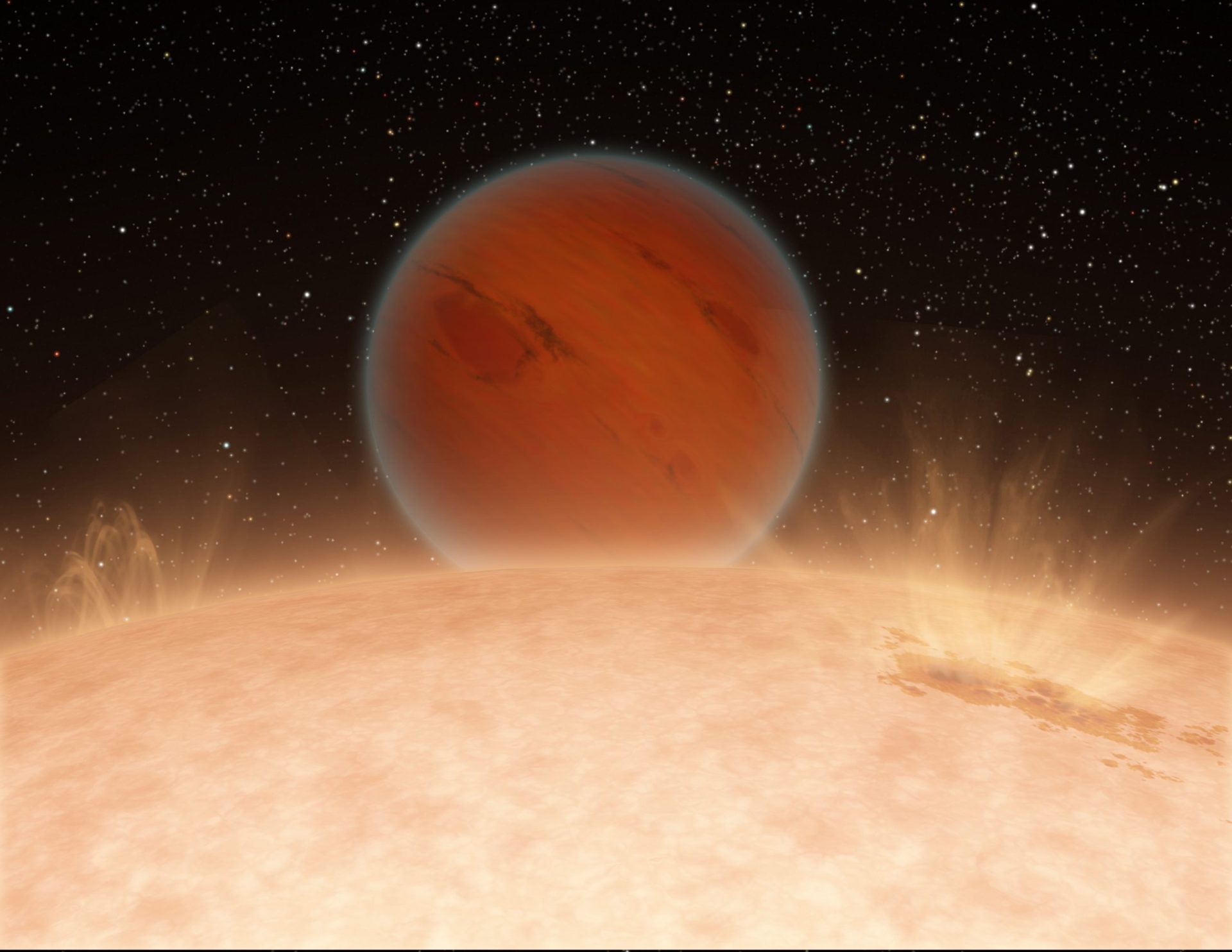
The GJ 436 system is located only 33 light-years away, in the constellation Leo. Around a relatively small M-dwarf star, orbits the Neptune-sized planet GJ 436b. This extrasolar planet completes one revolution in just 2.64 days, following an elliptical path that takes it ~10 times closer to its parent star than Mercury’s orbit does to the Sun. Being in such a tight orbit, the planet is considered to be quite hot, with a temperature of ~800 K (980 F). However, compared to most other close-in extrasolar planets (known as “hot Jupiters”), GJ 436b is the coolest planet with a measured atmospheric composition.
In the recently published (22 April 2010) Nature article titled “Possible thermochemical disequilibrium in the atmosphere of the exoplanet GJ 436b” by Stevenson et al., we suggest that GJ 436b’s atmosphere is abundant in CO and deficient in methane (CH4) by a factor of ~7,000. This result is unexpected because, based on current models at this temperature, the atmospheric carbon should prefer CH4 over CO.
The abundance of these two chemical species is governed by the following chemical reaction: CO + 3H2 <-> CH4 + H2O, where the favored direction of reaction depends on the local temperature. Below ~1000 K (1340 F) and assuming thermochemical equilibrium, the reaction rate is faster going to the right, resulting in plenty of methane. Since GJ 436b’s temperature is only about 800 K (980 F), we would expect that most of the CO would have been converted to CH4. However, the observations tell us otherwise and suggest that the assumptions about equilibrium are likely invalid. Theorists are currently working towards improving their models to account for the many different types of disequilibrium processes that can occur.

The Nature paper, led by UCF graduate student Kevin Stevenson and Planetary Sciences Group professor Joseph Harrington, considers several disequilibrium processes as possible explanations. One such process requires vertically dredging CO up from deeper parts within the atmosphere (where it is hotter) to higher elevations where the measurements are made. Another involves the polymerization of CH4into hydrocarbons such as ethylene (C2H4).
The Spitzer Space Telescope observed GJ 436b while it passed behind its parent star, as seen from Earth. This is known as a secondary eclipse. The infrared space telescope made a total of six observations using three different instruments. The Infrared Array Camera (IRAC) measured four secondary eclipses at 3.6, 4.5, 5.8, and 8.0 μm and the Infrared Spectrograph (IRS) and Multi-Band Imaging Photometer for Spitzer (MIPS) measured one eclipse each at 16 and 24 μm, respectively.
Links
GJ 436b – Where’s the methane?

